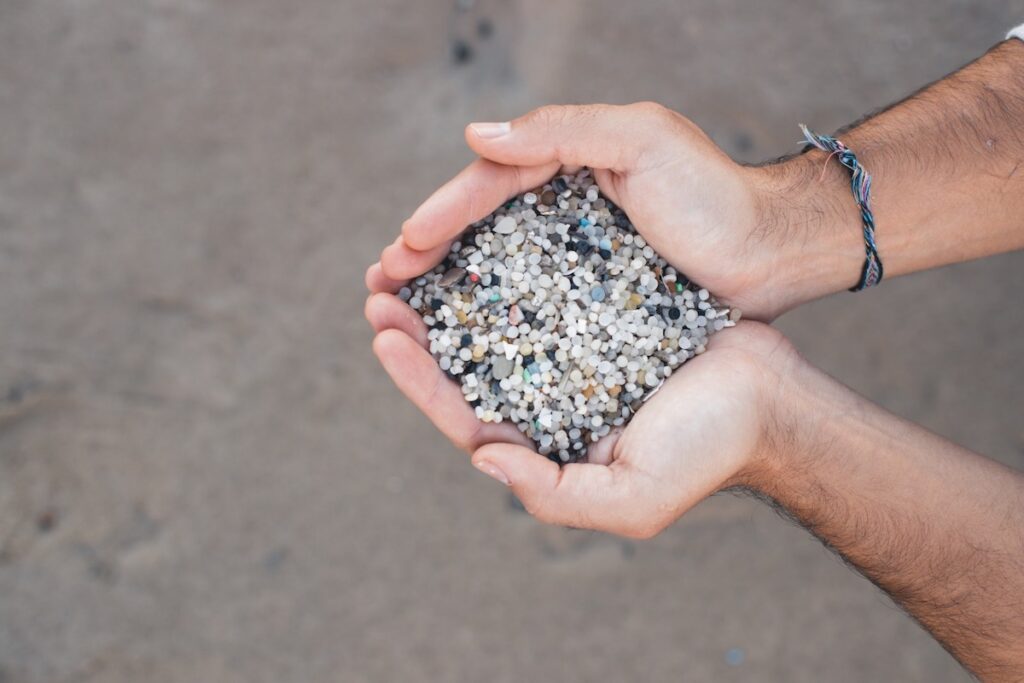Every year up to 10 trillion plastic pellets end up on the environment. Pellets are the raw material used to make plastic products.
Plastic pellets, also known as nurdles or mermaid’s tears, are small spheres that are used as a raw material in the manufacture of almost all plastic items. Due to their small size (normally less than 5 mm) and poor practices, pellets are often “lost” at all stages of the plastic production and distribution chain (production, transport, recycling …).
A pollution with great impact
Según las estimaciones de un informe encargado por la Comisión Europea en 2018, la industria “pierde” cada año en la UE alrededor de 160.000 toneladas de pellets de plástico. Globally, more than 250,000 tons of plastic granules end up in aquatic environments every year. Contamination from plastic pellets is therefore the second most important source of primary microplastic contamination. This is also confirmed by the Pew Environment report ‘Breaking the plastic wave‘, which estimates the pellets that end up in the ocean at 10 trillion each year.
The pellets act as “sponges” for toxics and bacteria present in the marine environment that add to the already harmful additives that the pellets contain.
Once in nature, the pellets remain in the environment for hundreds of years, causing irreversible damage to biodiversity and life, and to marine and terrestrial habitats. Animals can swallow the pellets, which they mistake for fish eggs, clogging their stomachs and often leading to their death. Pellets also break down and gradually enter the food chain, posing a potential risk to human health.
 In addition, pellets, like all other plastics, act as “sponges” for toxics and bacteria present in the marine environment that add to the already harmful additives that the pellets contain.
In addition, pellets, like all other plastics, act as “sponges” for toxics and bacteria present in the marine environment that add to the already harmful additives that the pellets contain.
The report published by Surfrider Foundation Europe, on behalf of the Rethink Plastic alliance,highlights five recent cases of industrial pollution with plastic pellets in different European countries: a spill in the north of France, an accident in the North Sea (which affected Norway, Sweden and Denmark), and the continuous contamination of the plants of production and processing of pellets in Tarragona (Spain), Antwerp (Belgium) and Rotterdam (Netherlands).
What’s happening in Tarragona?
Good Karma Projects has been documenting and investigating the appearance of plastic pellets on the beaches of Tarragona since 2018. Now through collaboration with Surfrider Foundation Europe and its program Coastal Defenders, the case has been presented to the European institutions to urgently adopt legal measures to regulate the activities of the plastic chain, and to ensure that the whole chain puts in place good practices to limit and stop contamination by pellets.
Pellet contamination in the area is recurrent and constant. In February 2019 it was estimated that there could be up to 90 million pellets on the beach at La Pineda.
In recent years, various episodes have been observed in which large amounts of pellets have appeared on the beaches in the area. At the end of 2018 there was a large spill on the beach of La Pineda, later Good Karma Projects estimated a presence of between 30 and 90 million pellets on the beach, with a concentration of 500 to 3000 pellets per m2. In July 2019, a large spill was also reported on the Miracle beach, and after a month pellets appeared in Playa Larga and l’Arrabassada. During the investigations, the presence of pellets was also found in the sea.
Our investigations are very recent but multiple people have confirmed to us that 40 years ago they already found these plastic balls on the beach. What is more surprising is that these same people also affirm that it is now that they have learned that these balls are the raw material for making plastic products, and therefore they have also understood their origin. – Jordi Oliva, Good Karma Projects
Contamination by pellets in the area is recurrent and the pellets found are of different colors and shapes, as a result of different discharges and continuous losses by the companies located in the Petrochemical Park and the port of Tarragona. In fact, Tarragona and Barcelona account for over 70% of the plastic producing industry in Spain. According to data from the Tarragona Chemical Business Association, 19.3 metric tons of plastic were produced in Tarragona in 2017.
The contamination exposed here is the result of recent data collection. However, sources confirm that these spills are not new and have been occurring since petrochemicals arrived in the area 50 years ago. Since then, no company has been held responsible for the spills that have continuously and repeatedly affected the Tarragona area and that most likely have spread to the Mediterranean region, reaching surrounding areas and impacting exceptional biodiversity hotspots such as the Balearic Islands and the Delta del Ebro. Although those responsible for these episodes of contamination still do not come to light, and despite the fact that companies in the area report that they comply with preventive measures to prevent this from happening, recurrent cases of contamination by pellets continue to occur at the expense of the environment.
What can be done?
For the past 30 years, some industry players have been trying to tackle the problem by promoting a series of good practices through the initiative called “Operation Clean Sweep”. The initiative is voluntary and non-binding, and has proven incapable of acting effectively, in light of the studies outlined in the report.
Given the magnitude of the pollution and the irreversible damage it generates, together with Surfrider Europe we call on the European institutions to urgently adopt legal measures to regulate the activities of the plastic chain and ensure that the entire chain implements good practices . to limit and stop pellet contamination.


